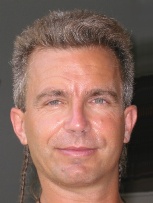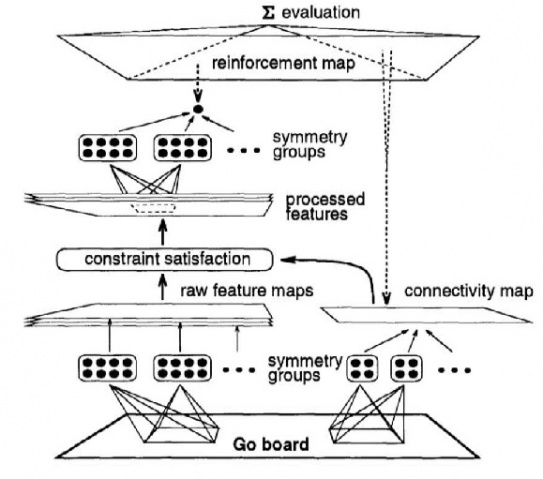Difference between revisions of "Nicol N. Schraudolph"
GerdIsenberg (talk | contribs) (Created page with "'''Home * People * Nicol N. Schraudolph''' FILE:Nicol_Schraudolph.jpg|border|right|thumb|link=http://canberra06.mlss.cc/index.html%3Fq=user%252Fview%252F1...") |
GerdIsenberg (talk | contribs) |
||
| Line 5: | Line 5: | ||
'''Nicol N. (Nic) Schraudolph''',<br/> | '''Nicol N. (Nic) Schraudolph''',<br/> | ||
a German computer scientist, independent researcher and consultant in [[Learning|machine learning]] and [https://en.wikipedia.org/wiki/Mathematical_optimization optimization], in particular [https://en.wikipedia.org/wiki/Stochastic_gradient_descent stochastic gradient descent]. | a German computer scientist, independent researcher and consultant in [[Learning|machine learning]] and [https://en.wikipedia.org/wiki/Mathematical_optimization optimization], in particular [https://en.wikipedia.org/wiki/Stochastic_gradient_descent stochastic gradient descent]. | ||
| − | He received a B.Sc. degree in computer science | + | He received a B.Sc. degree in computer science from the [https://en.wikipedia.org/wiki/University_of_Essex University of Essex] in 1988, and M.Sc. and Ph.D. degrees in computer science and cognitive science from [https://en.wikipedia.org/wiki/University_of_California,_San_Diego University of California, San Diego], the Ph.D. in 1995 on optimization of [https://en.wikipedia.org/wiki/Entropy_%28information_theory%29 entropy] with [[Neural Networks|neural networks]] under [[Terrence J. Sejnowski]] |
<ref>[[Nicol N. Schraudolph]] ('''1995'''). ''[https://nic.schraudolph.org/bib2html/b2hd-Schraudolph95 Optimization of Entropy with Neural Networks]''. Ph.D. thesis, [https://en.wikipedia.org/wiki/University_of_California,_San_Diego University of California, San Diego]</ref>. | <ref>[[Nicol N. Schraudolph]] ('''1995'''). ''[https://nic.schraudolph.org/bib2html/b2hd-Schraudolph95 Optimization of Entropy with Neural Networks]''. Ph.D. thesis, [https://en.wikipedia.org/wiki/University_of_California,_San_Diego University of California, San Diego]</ref>. | ||
His previous research affiliations include [https://en.wikipedia.org/wiki/NICTA NICTA] [https://de.wikipedia.org/wiki/Canberra] Canberra], [[ETH Zurich]] and [https://en.wikipedia.org/wiki/Dalle_Molle_Institute_for_Artificial_Intelligence_Research Dalle Molle Institute for Artificial Intelligence Research], [https://en.wikipedia.org/wiki/Lugano_District Lugano]. | His previous research affiliations include [https://en.wikipedia.org/wiki/NICTA NICTA] [https://de.wikipedia.org/wiki/Canberra] Canberra], [[ETH Zurich]] and [https://en.wikipedia.org/wiki/Dalle_Molle_Institute_for_Artificial_Intelligence_Research Dalle Molle Institute for Artificial Intelligence Research], [https://en.wikipedia.org/wiki/Lugano_District Lugano]. | ||
Revision as of 16:57, 11 June 2019
Home * People * Nicol N. Schraudolph

Nicol N. (Nic) Schraudolph,
a German computer scientist, independent researcher and consultant in machine learning and optimization, in particular stochastic gradient descent.
He received a B.Sc. degree in computer science from the University of Essex in 1988, and M.Sc. and Ph.D. degrees in computer science and cognitive science from University of California, San Diego, the Ph.D. in 1995 on optimization of entropy with neural networks under Terrence J. Sejnowski
[2].
His previous research affiliations include NICTA [1] Canberra], ETH Zurich and Dalle Molle Institute for Artificial Intelligence Research, Lugano.
Contents
Learning Go
Along with Peter Dayan and his advisor, Terrence J. Sejnowski, Nicol Schraudolph applied temporal difference learning to an evaluation function in the game of Go, as published in 1994 [3], and in 2001 [4].
A modular network architecture that takes advantage of board symmetries,
translation invariance and localized reinforcement to evaluate Go positions [5]
Selected Publications
1991 ...
- Nicol N. Schraudolph, Terrence J. Sejnowski (1991). Competitive Anti-Hebbian Learning of Invariants. NIPS 1991
- Nicol N. Schraudolph, Terrence J. Sejnowski (1992). Unsupervised Discrimination of Clustered Data via Optimization of Binary Information Gain. NIPS 1992
- Nicol N. Schraudolph, Peter Dayan, Terrence J. Sejnowski (1993). Temporal Difference Learning of Position Evaluation in the Game of Go. NIPS 1993 [9]
- Nicol N. Schraudolph, Terrence J. Sejnowski (1994). Plasticity-Mediated Competitive Learning. NIPS 1994
- Nicol N. Schraudolph (1995). Optimization of Entropy with Neural Networks. Ph.D. thesis, University of California, San Diego
- Nicol N. Schraudolph, Terrence J. Sejnowski (1996). Tempering Backpropagation Networks: Not All Weights are Created Equal. NIPS 1995, pdf
- Nicol N. Schraudolph (1998). Centering Neural Network Gradient Factors. Neural Networks: Tricks of the Trade, 2nd ed. 2012
2000 ...
- Nicol N. Schraudolph, Peter Dayan, Terrence J. Sejnowski (2001). Learning to Evaluate Go Positions via Temporal Difference Methods. Computational Intelligence in Games, Studies in Fuzziness and Soft Computing. Physica-Verlag, revised version of 1993 paper
- Magdalena Klapper-Rybicka, Nicol N. Schraudolph, Jürgen Schmidhuber (2001). Unsupervised Learning in LSTM Recurrent Neural Networks. ICANN 2001
- Desmond Chik, Jochen Trumpf, Nicol N. Schraudolph (2007). 3D Hand Tracking in a Stochastic Approximation Setting. Workshop on Human Motion 2007
- S.V.N. Vishwanathan, Karsten Borgwardt, Risi Kondor, Nicol N. Schraudolph (2008). Graph Kernels. arXiv:0807.0093 [10]
- Nicol N. Schraudolph, Dmitry Kamenetsky (2008). Efficient Exact Inference in Planar Ising Models. arXiv:0810.4401
2010 ...
- S.V.N. Vishwanathan, Nicol N. Schraudolph, Risi Kondor, Karsten Borgwardt (2010). Graph Kernels. Journal of Machine Learning Research, Vol. 11
- Nicol N. Schraudolph (2010). Polynomial-Time Exact Inference in NP-HardBinary MRFs via Reweighted Perfect Matching. AISTATS 2010, pdf
- Nicol N. Schraudolph (2012). Centering Neural Network Gradient Factors. Neural Networks: Tricks of the Trade, 2nd edition
- Nicol N. Schraudolph (201?). Rapid Stochastic Gradient Descentfor Atomic Learning. NICTA, slides as pdf, pdf
External Links
- Nic Schraudolph
- Introduction to Neural Networks by Nicol N. Schraudolph and Fred Cummins
- Going for Go
References
- ↑ Nic Schraudolph - NICTA
- ↑ Nicol N. Schraudolph (1995). Optimization of Entropy with Neural Networks. Ph.D. thesis, University of California, San Diego
- ↑ Nicol N. Schraudolph, Peter Dayan, Terrence J. Sejnowski (1994). Temporal Difference Learning of Position Evaluation in the Game of Go. Advances in Neural Information Processing Systems 6
- ↑ Nicol N. Schraudolph, Peter Dayan, Terrence J. Sejnowski (2001). Learning to Evaluate Go Positions via Temporal Difference Methods. in Norio Baba, Lakhmi C. Jain (eds.) (2001). Computational Intelligence in Games, Studies in Fuzziness and Soft Computing. Physica-Verlag
- ↑ Image 1 from Nicol N. Schraudolph, Peter Dayan, Terrence J. Sejnowski (1994). Temporal Difference Learning of Position Evaluation in the Game of Go. Advances in Neural Information Processing Systems 6
- ↑ dblp: Nicol N. Schraudolph
- ↑ dblp: Nic Schraudolph
- ↑ Nic Schraudolphs's Publications by Year
- ↑ Nici Schraudolph’s go networks, review by Jay Scott
- ↑ Graph kernel from Wikipedia
